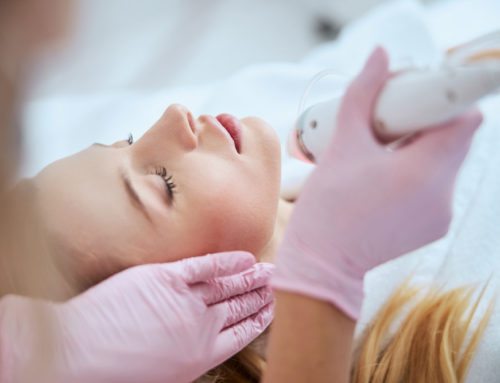If you’ve ever purchased a skincare product, then you’ve probably seen the word “noncomedogenic” before. And like many, you may have seen it, figured it was a good thing, and moved on. But what does the term “noncomedogenic” mean, exactly, and what can it mean for the health of your skin? Here as a look at the term, along with how comedogenic ratings can help you find the right skincare for your skin.
“Comedogenic” and “noncomedogenic” defined
Put simply, a skincare ingredient that is comedogenic will clog pores. It will cause acne rather than improving the look of your skin. Noncomedogenic skincare ingredients, then, can be used safely on the skin without clogging pores and causing acne.
Comedogenic ratings
Of course, skincare ingredients do not fall neatly into two categories: comedogenic and noncomedogenic. Every skincare ingredient uniquely affects the skin, and therefore every ingredient has its own “comedogenic rating.” Comedogenic ratings number 0 through 5, as follows:
0: won’t clog pores
1: mildly comedogenic, but still generally good on skin
2: lightly comedogenic, but okay in small amounts
3: moderately comedogenic (be cautious)
4–5: highly comedogenic (be very cautious)
As you can see, the best skincare ingredients exhibit a comedogenic rating of 0 to 2. Common skincare ingredients that fall within this range are aloe vera gel (0), argan oil (0), panthenol (0), shea butter (0), castor oil (1), rosehip oil (1), seabuckthorn oil (1), grape seed oil (2), jojoba oil (2), and olive oil (2).
Some skincare ingredients are surprisingly comedogenic. Cocoa butter and coconut oil, for example, both have a comedogenic rating of 4, while wheat germ oil has a comedogenic rating of 5.
Finding the right skincare for you
Understanding the terms “comedogenic” and “noncomedogenic,” along with comedogenic ratings, can help you significantly as you look for the right skincare products for your skin. If you are even remotely acne prone, you should always look for skincare products that contain only noncomedogenic and low comedogenic ingredients. And even if you are not acne prone, it’s a good idea to invest in skincare products that you know are safe on your skin, even at a microscopic level. Simply search “comedogenic rating” for any ingredient you are unsure about, and you’ll get an instant answer. Many websites even publish charts that display the comedogenic ratings for a wide variety of ingredients.
This does not mean that you can’t use any skincare product that contains a comedogenic rating of 3 or above. Your skin may, for example, respond very well to such a product when used on the legs, arms, hands, and feet. Just be mindful as you select skincare products, and always monitor how your skin responds to new products as you try them.







